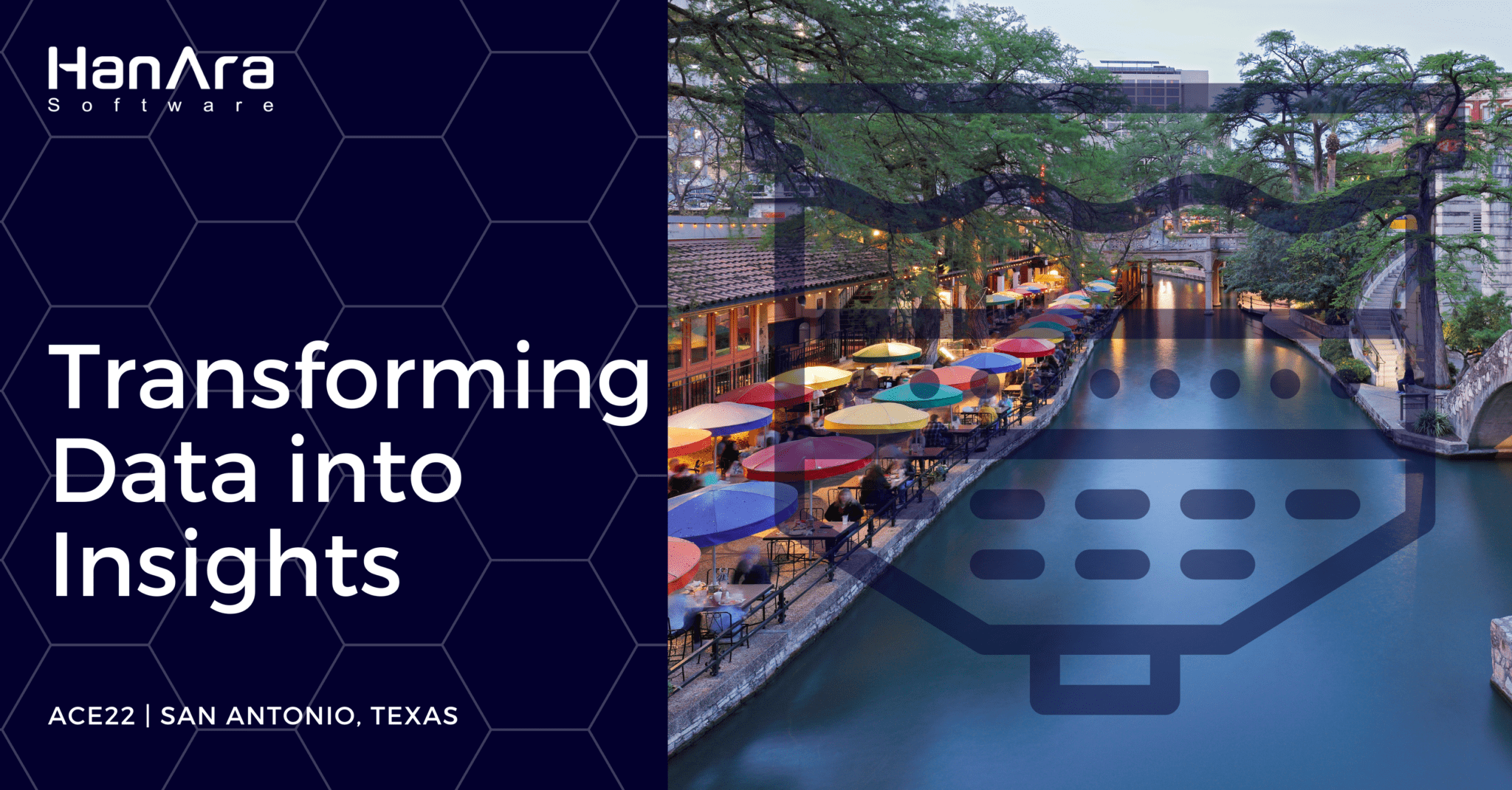It has been a busy few weeks for HanAra as we have recently attended various conferences across North America. This past week, we had the opportunity to exhibit along with our Korean parent company BNF Technology at the American Water Works Association ACE22 conference.
This year’s conference motto was Inform, Influence, and Impact. Members of the water and wastewater industry from across the globe do this every day. After attending an event filled with best practices, lessons learned, and open discussions, we thought we would share how data can help you inform, influence, and impact your organization.
Inform
Data can inform users of where they have been, where they are, and where they are going. Whether it is quantitative data, qualitative data, or a combination of the two, data helps us understand and improve our decision-making processes. But to provide users with the insights and actionable intelligence needed, data must first include context and be accessible.
Context is an essential element of data analysis. A simple example of this is the use of line charts when evaluating current statuses. Historical and real-time trends provide context to the user about whether current operations have increased, decreased, or remained flat. An individual value on its own cannot provide this information. When looking at your current data usage, ask yourself whether you have the necessary context to properly analyze and interpret the data.
For context to be needed, you first must ensure the data is accessible. If you want data to inform your operations, planning, and decision-making, you need to be able to get to it easily and quickly. When reviewing your current data management structure, make sure you are protecting the quality and validity of the data collected. Also, remember to give users who may be in different departments or different locations the required access.
Influence
As a data management and predictive analytics solution provider, we believe in the power and importance of data. This does not mean, however, that more data equals more influence. One mistake we see users and organizations make is providing too much data, believing that data will speak for itself. Unlike computers, humans cannot ingest and digest copious amounts of data quickly and efficiently. This is where data visualizations and prioritization come into play.
Visualizations help people understand their current operations in real-time as well as remember them in the future. What makes data visualizations useful is that they are supported by sound data and valuable analysis. When creating your data visualizations, either through data analytics and visualization software tools or through Excel, make sure to include your assumptions and documentation. There is no point to a beautifully designed trend if the information behind it is meaningless.
An important aspect of data visualization is understanding what insights and data to prioritize. This does not mean you get to cherry-pick information and dismiss inconvenient information. Instead, users should prioritize and focus on the information that answers the questions they are trying to solve (whether it is good or bad). After prioritization, there are various tools like dashboards to help display the information to influence action and decisions.
Impact
As industries including water and wastewater continue their digital transformation journey, data will continue to impact how we all currently do business and how we will do business in the future. No longer is data siloed to the IT or data department. Today, all layers of the organization benefit from analyzing and gaining insights from data.
For data to have an impact you must support it with action and execution. For example, through equipment data, you can find failures in advance, giving you more lead time before a functional failure happens. But if there is no one at the site who will act, knowing early will not fix the failure. Organizations must then review their internal processes and procedures to incorporate the insights data provides into their day-to-day operations early and often.
When done properly, an organization will experience improved operations, enhanced safety, and reduced costs. This is the reason for digital transformation. Not to merely use data and technology, but to have it make a positive impact on how organizations run now and in the future.
Ready to Learn More
Missed us at our booth or during our presentation this year at ACE22? Check out our upcoming events here or reach out directly to schedule a call.

